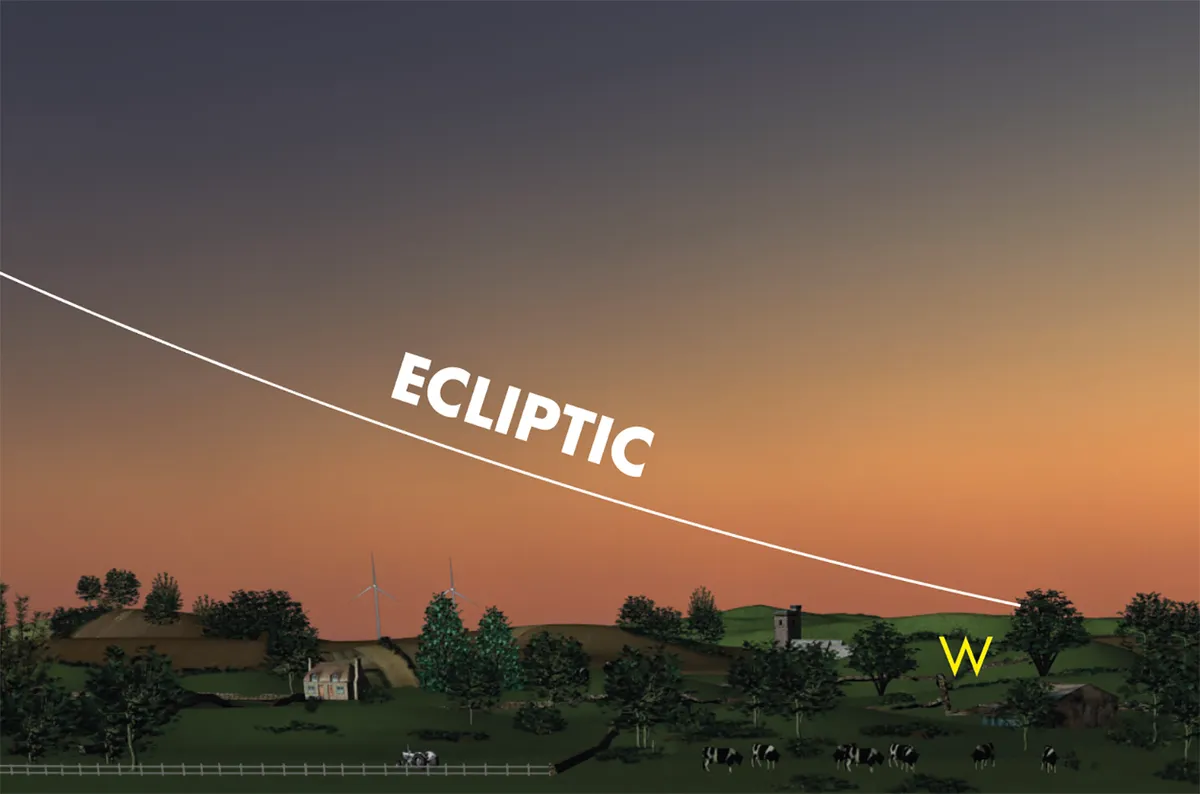Did you see the seven-planet parade on 28 February? If so, you're likely wondering what's next for the planets.
The bad news is that all those wonderful Solar System worlds that have been gracing our skies throughout the start of 2025 are soon going to disappear from you.
The good news is the show isn't over yet!
January and February 2025 were great for observing the planets (except for Mercury), as Venus, Mars, Jupiter, Saturn, Uranus and Neptune were all visible in the night sky.
As we reached mid-February, Saturn, Venus, Neptune, Uranus, Jupiter and Mars were still visible after sunset, but things became a bit trickier as we approached late February
Get weekly stargazing advice by listening to our Star Diary podcast and signing up to the BBC Sky at Night Magazine e-newsletter
It's been a fantastic start to 2025, Venus appearing beside the crescent Moon on 3 January and Mars having a close encounter with the full Moon on 13 January.
Jupiter had a beautiful meeting with the Moon over the nights of 5–8 February, and on 9 February the Red Planet Mars was just below the gibbous Moon.
Let's take a look at what's in store for the planets as we move into March 2025.
- Discover our pick of the best telescopes for seeing planets

Planetary alignments and parades
Whether you call it a planetary alignment or a planetary parade, it's not uncommon for multiple planets to be visible in the night sky together.
And it's not uncommon for planets to be visible in a 'line' across the sky.
There is an imaginary line that the path of the Sun traces across the daytime sky, and this is known as the 'ecliptic'.
The ecliptic is due to the fact that Earth and all the other Solar System planets formed out of the same flat disc of gas and dust that once surrounded our infant Sun.
This means the planets in the Solar System all occupy roughly the same orbital plane – Earth included – and therefore all more or less follow the line of the ecliptic in the sky.

So, when multiple planets are visible in the sky, they'll located be roughly along this line. And this is one of the ways of telling the difference between a planet and a star.
It's also why so-called 'planetary alignments' are really an inevitability.
But that doesn't make them any less special to see for yourself.

Planets in March 2025
Here's a run-down of what the planets are doing as we move into March. Get more info with our guide on what to see in the night sky this week.
Mercury
Mercury is in the evening sky at the beginning of March, setting 1.5 hours after the Sun on 1 March.
On 2 March, Mercury is close to Neptune, but twilight will cause problems if you're attempting to see Neptune through a telescope.
Mercury reaches greatest eastern elongation – its furthest point from the Sun – on 8 March, making this the best time to see it.
On 12 March, Mercury and Venus are close together in the sky.
Around the middle of March, Mercury becomes less easy to see. It reaches inferior conjunction – when it sits between Earth and the Sun – on 24 March, and is lost from view.
By the end of March, Mercury will be a morning planet.
Venus
Venus has been spectacular in 2025 so far, and can still be seen as a bright 'star' in the early evening, if you look to the west.
Venus's position in the sky is bringing it closer to the Sun as March rolls on.
It reaches inferior conjunction on 23 March 2025, when it's sitting between Earth and the Sun and not visible to the naked eye.
Venus and Mercury are in conjunction on 12 March, and Venus will not be visible to the naked eye shortly after this.

Mars
Mars, having reached opposition in January 2025, is still great for observing in early March
The Red Planet has a close encounter with the Moon on 9 March.
By the end of March, however, Mars will have dimmed, shrunk and be more tricky to see even through a telescope.
Jupiter
Jupiter has been sitting high in the night sky above Orion throughout early 2025 so far, primed for observing.
Yet even Jupiter is set to disappear from easy view relatively soon.
Jupiter is just to the west of south at the start of March, and will have a meeting with the Moon on 5 March.
By the end of March, Jupiter is still visible around 20:00 under dark twilight, lower in the sky than it has been.
Saturn
Saturn has finally been lost from view, and isn't visible this month
Uranus
Uranus is west of Jupiter in March 2025, and it too will lose visibility soon.
By 31 March, Uranus is just 18° high in the sky at 20:45 UT.
Neptune
Like Saturn, Neptune is lost from view in March 2025.
Share your observing experiences and images with us by emailing contactus@skyatnightmagazine.com
